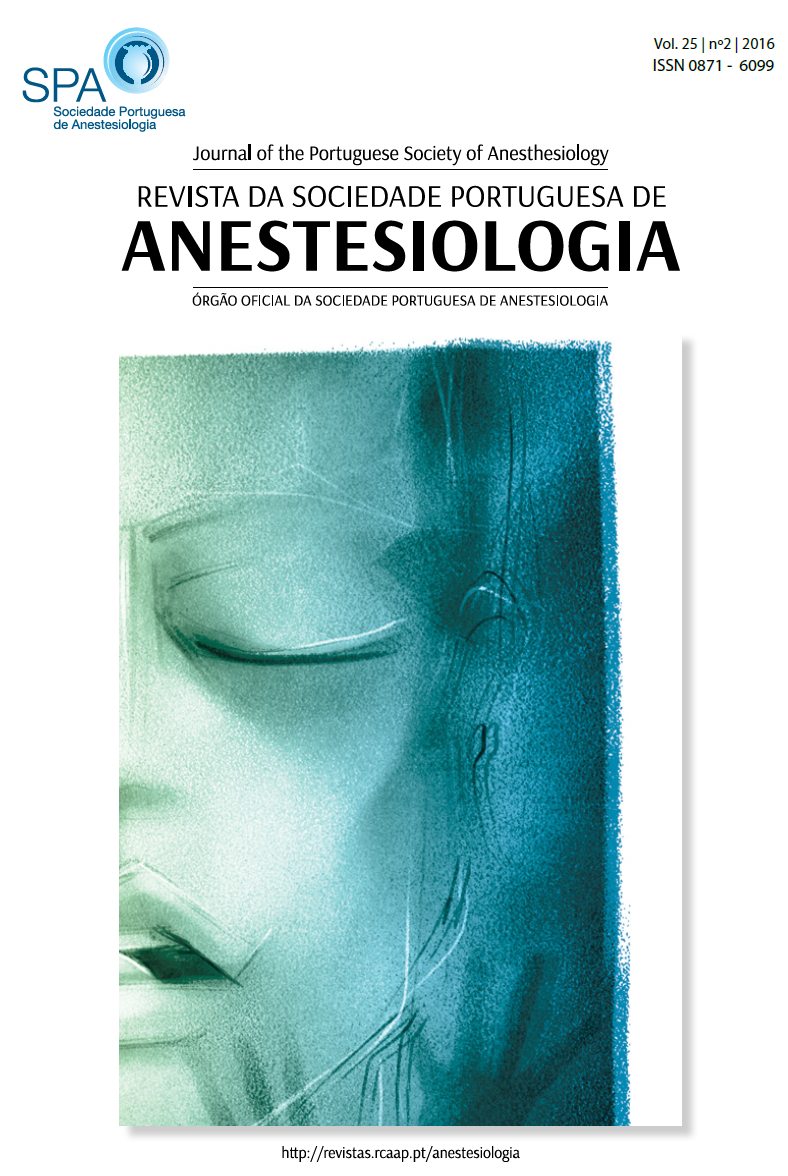Disreflexia Autonómica no Peri-operatório
DOI:
https://doi.org/10.25751/rspa.7265Palavras-chave:
disreflexia autonómica, lesão vértebro-medular, cirurgia urológica, hipertensão, anestesia geral, bloqueio sub-aracnoideuResumo
A disreflexia autonómica caracteriza-se por uma resposta simpática inapropriada em doentes com lesão vertebro-medular ao nível ou acima da sexta vértebra torácica, desencadeada por estímulos nóxicos ou outros provenientes de níveis abaixo da lesão. Apresentamos o caso de uma doente de 48 anos, com lesão traumática vertebro-medular, ao nível da transição cérvico-torácica, submetida a injeção intra-vesical de toxina botulínica, sob anestesia geral inalatória. No intra-operatório apresentou bradicardia acompanhada de hipertensão sustentada (pressão arterial máxima de 184/121 mmHg) e rubor cutâneo do pescoço e tórax, compatível com episódio de disreflexia autonómica. Apesar da rápida identificação e suspensão dos fatores desencadeantes, o quadro clínico reverteu apenas no pós-operatório, depois da administração de labetalol. Com este caso pretendemos reforçar a importância das medidas preventivas, nomeadamente a preferência pela anestesia regional em cirurgia urológica nos doentes com lesão vertebro-medular.
Downloads
Downloads
Publicado
Como Citar
Edição
Secção
Licença
Os artigos estão livremente disponíveis para serem lidos, descarregados e partilhados a partir do momento da sua publicação.
A RSPA reserva-se o direito de comercialização do artigo enquanto parte integrante da revista (na elaboração de separatas, por exemplo). O autor deverá acompanhar a carta de submissão com a declaração de cedência de direitos de autor para fins comerciais.
Relativamente à utilização por terceiros a Revista da SPA rege-se pelos termos da licença Creative Commons “Atribuição – uso Não-Comercial (CC BY-NC).
Após publicação na RSPA, os autores ficam autorizados a disponibilizar os seus artigos em repositórios das suas instituições de origem, desde que mencionem sempre onde foram publicados.


